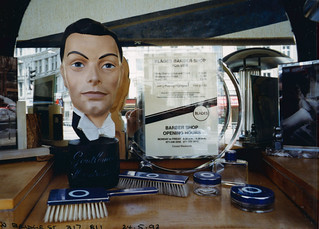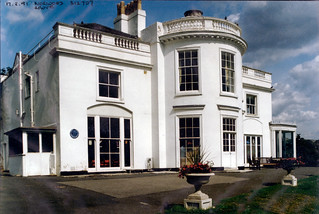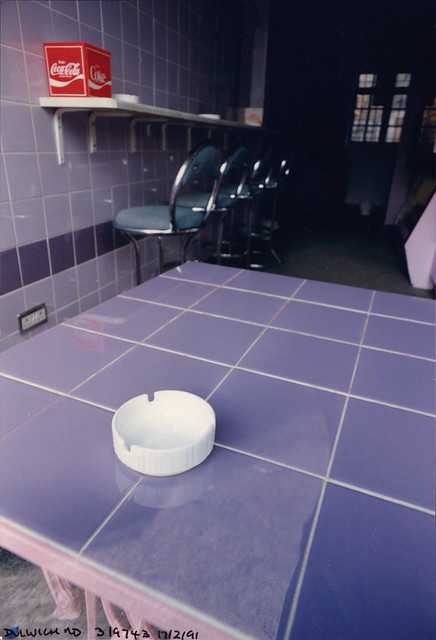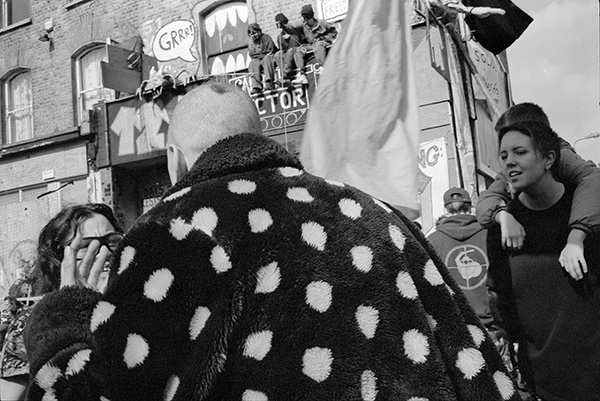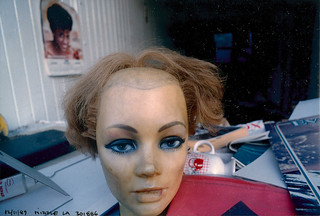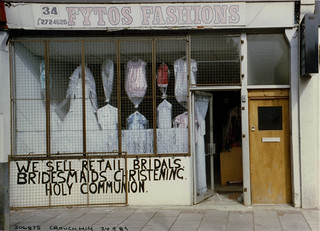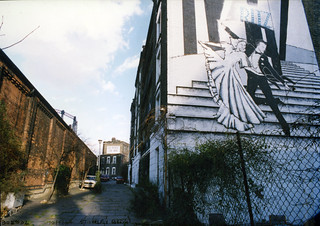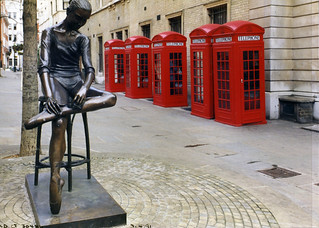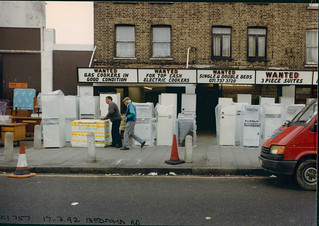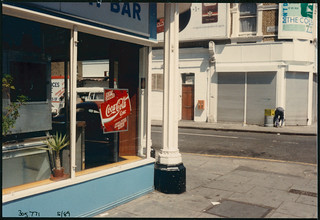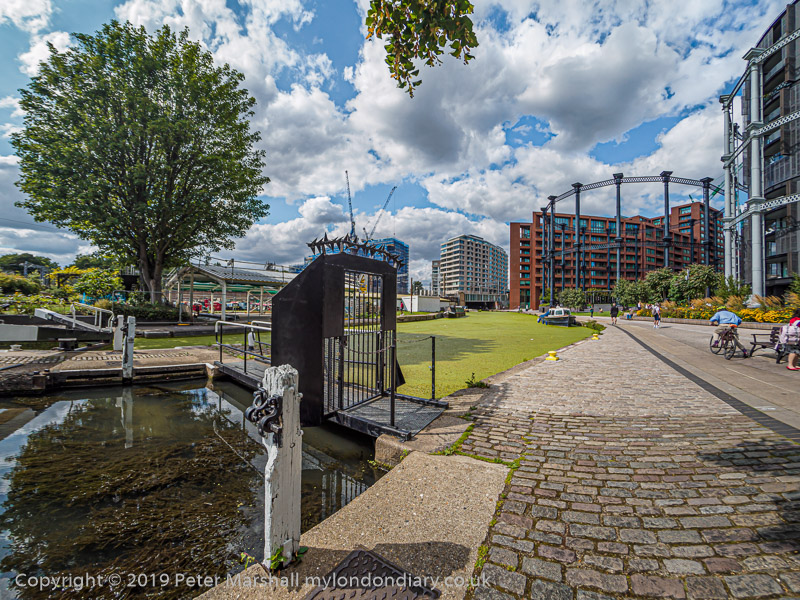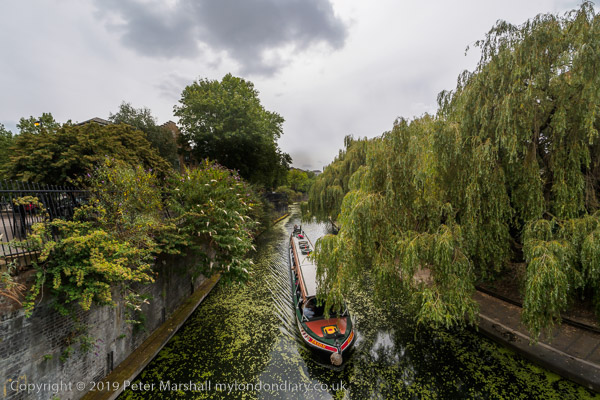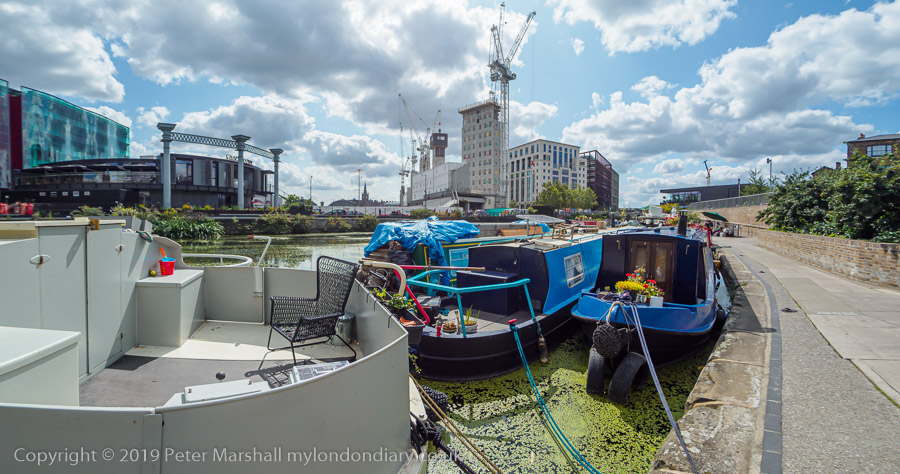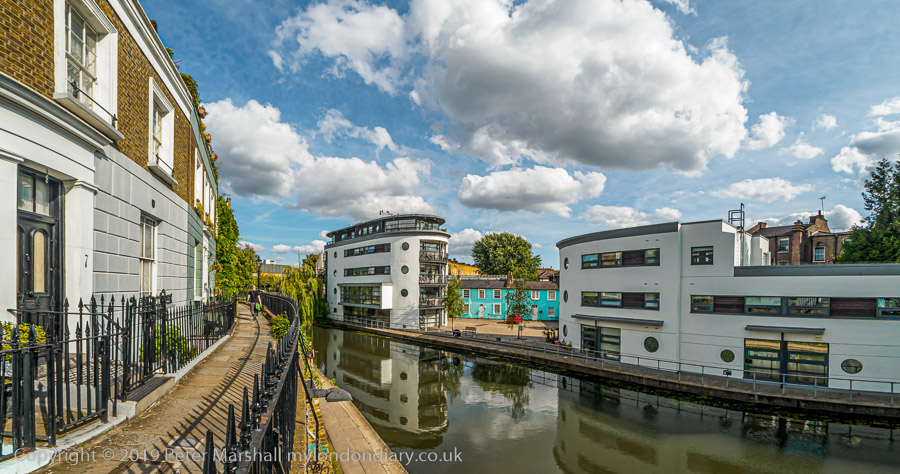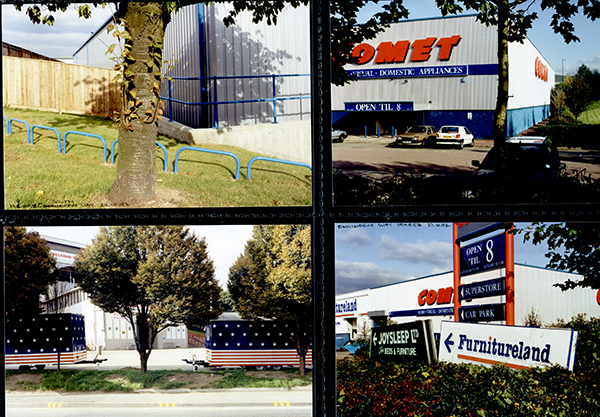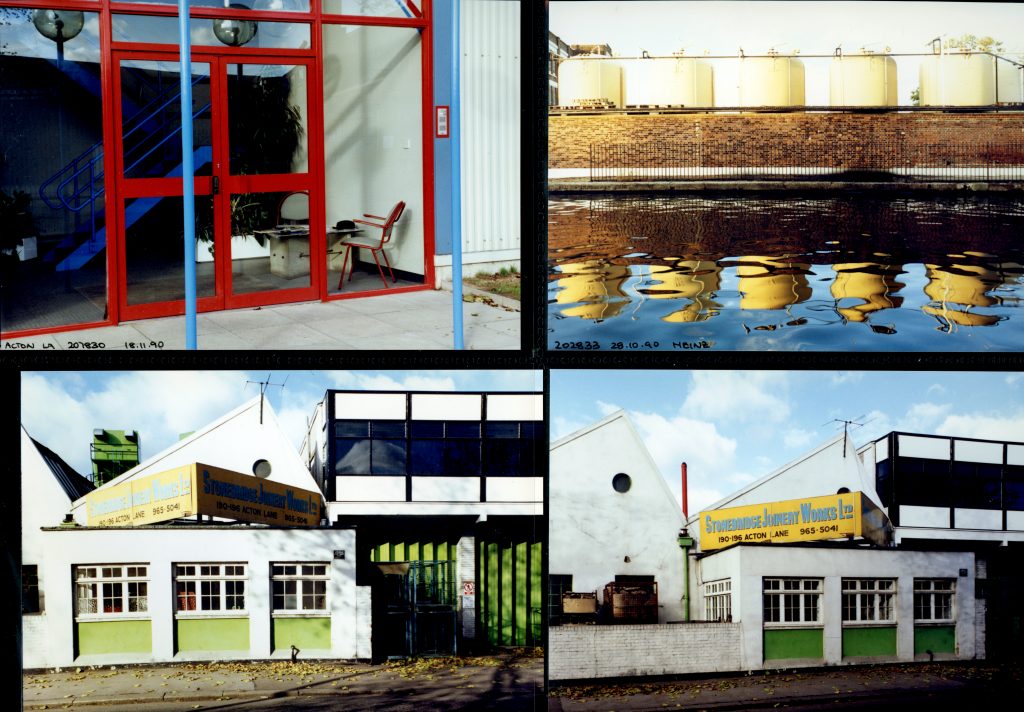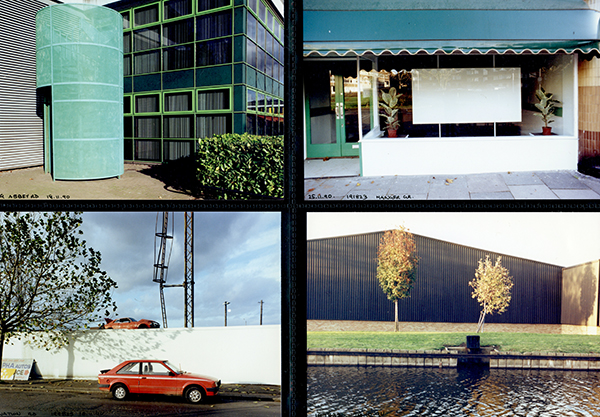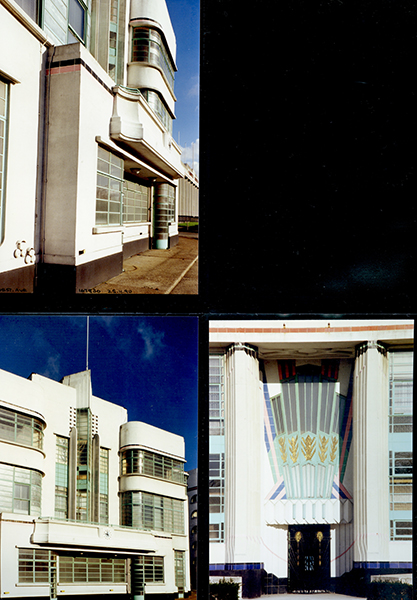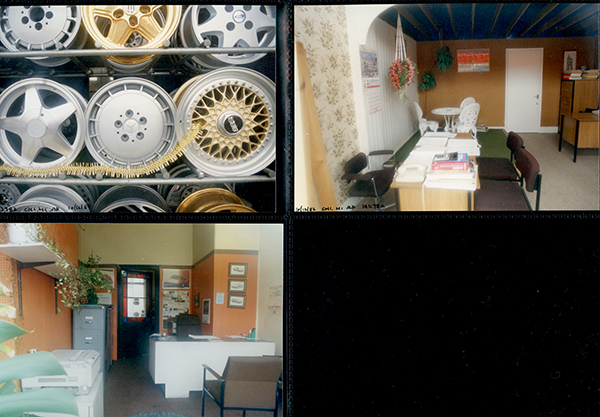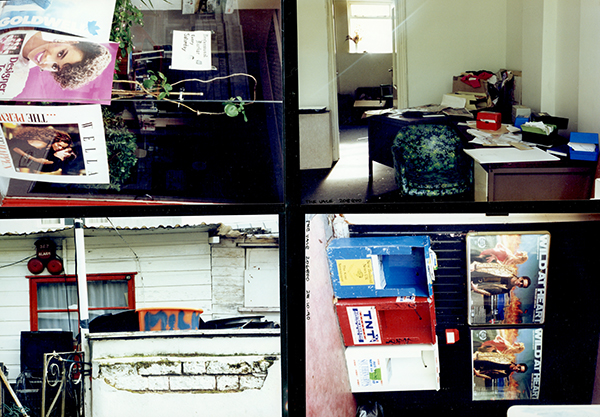I found this head in a barber’s window on New Bridge St fascinating if rather revolting and made several pictures of it and a similar head in another of the shop’s windows. At £11.95 for Mens Shampoo Cut and Finish back then (£25 at today’s prices) this was an establishment catering for the relatively wealthy, though women may think it still a bargain compared with what they pay. The company which had a number of shops is still in business but not at this address.
Curiously this little area of central London remained largely as it had been left after the war when I photographed here in 1992. The Queen’s Head was left alone after bombing in 1940 destroyed its neighbours, the Blue Last pub, the Ventura Restaurant and a stamp dealer in Ludgate Broadway. Fifty two years later their empty spaces only in use for car parks. Although I’ve labelled it on the enprint as Ludgate Broadway, a sign on the boarding around the bomb site reads Blackfriars Lane, but the view continues down f Ludgate Broadway to Pilgrim St. The size of the tree in the bomb site gives some indication of how long this site has been empty, though I think the ground level was some way down on the other side of the fence. The red building in Pilgrim St is still there, the 1891 City Bank with a frontage on Ludgate Hill, and had recently been restored at the time of the picture. A year later Ludgate Court on its west side was renamed Pageantmaster Court. The ugly block to the left of the City Bank has since been replaced by an even uglier one, but both this and the Old Bailey are no longer visible from where I was standing after the bomb site was redeveloped, I think around 2000.
Apart from the colour which seemed appropriate for the trade, I was certainly attracted by the painted brickwork around the door and the signs, both for ‘B. W. Bellgrove (Meat) Limited – Wholesale. Retail & Catering Butcher’ which seemed unusually explicit, and also for the street name, Eagle Court, which made the location clear. Eagle Court is a short distance to the north of Smithfield Market, and runs between Britton St and St John’s Lane.
Designed by Berthold Lubetkin in 1938, the foundation stone was laid in 1946 and the scheme completed in 1949, the Spa Green Estate between Rosebery Avenue and St John St in Clerkenwell is perhaps the most complete realisation of the modernist approach to social housing and a power expression of the new welfare state. It’s special status, confirmed by Grade II* listing in 1998 has enabled the estate, which had begun to deteriorate as government policies turned against council housing and made it difficult for local authorities to properly maintain it, has enable the TMO now responsible to carry out internal refurbishments to modern standards (and in many ways the original was well ahead of its times) and to restore the exterior to reflect Lubetkin’s original vision.
Wigton House on Agdon St in Finsbury. The street used to be called Wood’s Close, but at the start of the 20th century was renamed Northampton St, and then in 1939 the Marquess of Northampton (whose Compton family were the local landowners) was asked to suggest a new name for it and suggested Agdon St after property his family owned in Warwickshire. Back in the middle of the eighteenth century people apparently used to gather here to travel with an armed escort into London because of the danger of being robbed.
This was the rear entrance to Wigton House, whose frontage was on St John St. It was built by John Laing & Son Ltd in 1936-8 as a speculative development and named after Wigton in Cumbria, the area where the company came from. The building was converted into flats shortly after I took this picture in 1992 and renamed Paramount House. The frontage on St John St was altered but this side remains clearly identifiable.
The album TQ31 London Cross-section contains many more pictures from the City and Finsbury as well as areas both to the south and north, all made in the 1km wide strip with Grid reference beginning TQ31, all made between 1986 and 1992.
